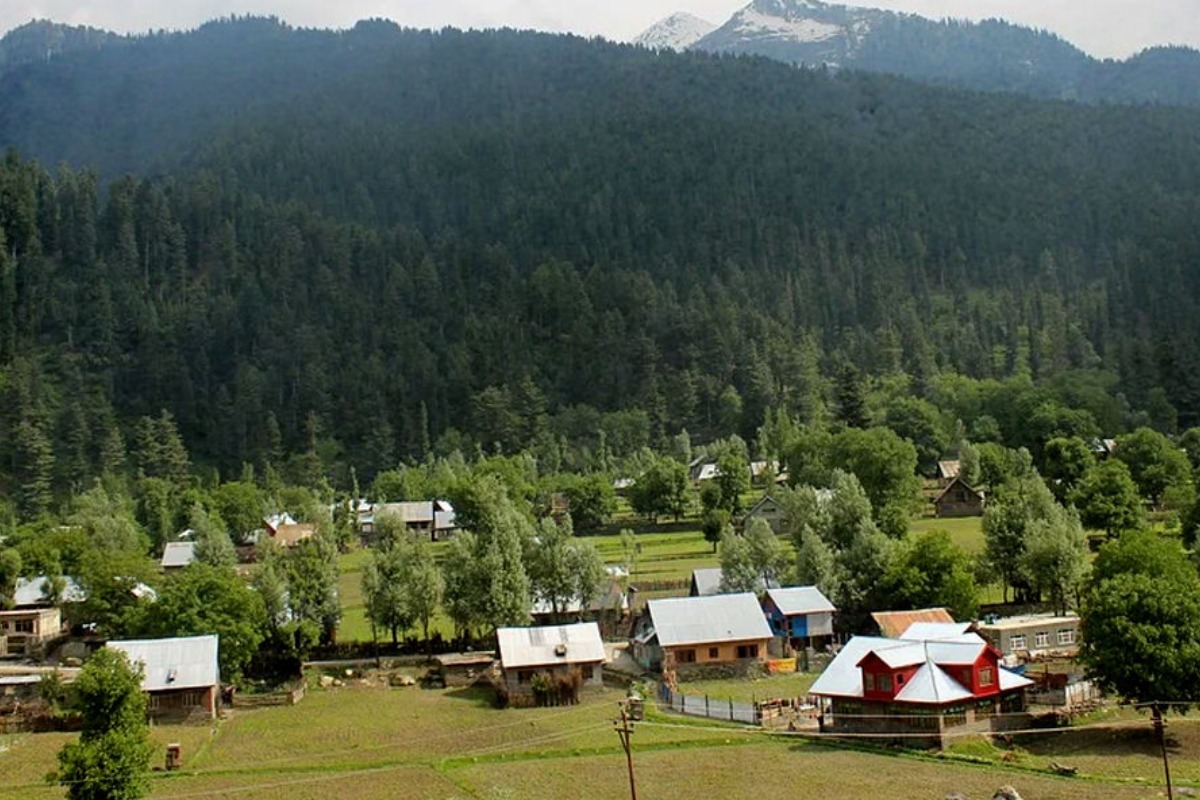The fall season in October serves as a poignant reminder of the origins of the fabricated “Kashmir dispute.” It rekindles memories of the immense destruction caused by Pakistan, not only within the Indian subcontinent through its involvement in Muslim politics in India but also through the partition – one of the most violent and catastrophic mass migrations in history.
The story of India’s independence from colonialism is a description of how in the last stages of leaving India, the Brits, in collaboration with the communal Muslim League carved India into West and East Pakistan (now Bangladesh).
Kashmir’s Muslim majority region, ruled by a Dogra Maharaja, an unpalatable fact for the elite Punjabi Muslims propounding the two-nation theory, became the unfinished business of Partition for the next seven decades. The legal and diplomatic victory came in 2019 and if the security reports coming from the Valley are to be believed, Pakistan will be finally militarily defeated by the end of 2023 in the Kashmir Valley.
Many Indians starting on their journey of discovering their nation do not know about Operation Gulmarg which became the first of those “bleeding India with a thousand cuts” policies, the logistics of which have been described by none other than Major-General Akbar Khan in his book Raiders in Kashmir.
The tribal ‘lashkars’ were exactly that – raiders – looting, killing, pillaging, and assaulting the women of Kashmir irrespective of their religion, caste, and creed in the Poonch and Sialkot area of Jammu. The Hamas medieval raid of 7th October is similar to what Kashmiris, irrespective of their ethnic and linguistic identities, suffered at the hands of those barbaric jihadis.
The looting and pillaging which the barbarians of the Afridi and other clans indulged in, was paradoxically also the reason why Srinagar did not fall and gave enough time for the Maharaja to ask India for help and accede to the newly formed Republic of India.
Tales of valour about defending Srinagar by the J&K Infantry headed by Major Somnath Sharma and the feats of Brigadier Rajinder Singh are enshrined in the war memorials dotting the landscape. So are the gallant roles that volunteer forces of men and women played during the tumultuous times, what became known as the Jammu & Kashmir National Militia.
The destruction wrought by the ‘lashkar’ militia, especially from the Afridi clan is best described in Andrew Whitehead’s book ‘A Mission in Kashmir’. The ‘sacking of Baramulla’ as it is known locally involved the raping and looting of Kashmiri families across Baramulla as the lashkars made their way towards the summer capital Srinagar.
BBC correspondent Andrew Whitehead puts the lives and tribulations of the members of a missionary hospital in Baramulla as the focal point of his book, recounting the events around October 22 and later culminating in the Accession of Kashmir to India. The brutal murders of a retired British officer Colonel Dyke and his pregnant wife along with a few of the mission’s nuns are still recalled by locals who survived the carnage.
Kashmiri octogenarians retell the tales of those dark days of October when lashkar militias comprising Pashtun tribesmen crossed the borders of the kingdom of J&K while its Maharaja was dealing with the rebellion at Poonch. The Maharaja of J&K Hari Singh was wavering in signing the accession documents to either India or Pakistan, with the National Conference under Sheikh Abdullah weighing in with the Indian National Congress and the Jamaat elements of Poonch and other areas throwing their loyalty with the “invited” raiders for merger with Pakistan. Pakistan’s government also imposed an economic blockade in violation of the standstill agreement, that Hari Singh had offered to enter with both the dominions, to pressurise him.=
As the news of the raids reached Srinagar, a WSDC, the women’s wing of Jammu & Kashmir National Militia, was raised to repel the tribals should they reach Srinagar. It provided a common platform that brought together Kashmiri women from different religions, castes, classes, and educational backgrounds to serve the common mission of defending their honour and dignity, by bearing arms.
Maharani Tarabai can be seen in photographs of that era, personally supervising the training of girls and women. Zooni Gujjar, a Muslim woman from a non-privileged background who was a renowned activist in the National Conference, became the face of this indigenous resistance against the Pakistani invaders on Kashmir Defends Democracy, a pamphlet produced in 1948 in support of Sheikh Abdullah and Kashmir’s accession to India.
The public display of Kashmiri women carrying rifles was an emphatic demonstration that the era of princely rule was over. A contingent of militia members was inspected by Nehru, India’s prime minister when he visited the Kashmir Valley.
The popular political mobilisation of which the women’s militia was part has been largely written out of the competing historical narratives in Kashmir. Pakistan doesn’t want to be reminded of a time when Kashmiris mustered in support of Indian rule; and Kashmiri Islamist separatists, many now advocates of the BJP ruling party of India, are uncomfortable being reminded that 70 years ago Kashmiris took to the streets and parade grounds to support accession to India.
As India enters the new year, proud of its geopolitical independence in the ongoing events in West Asia, people need to be reminded that progressive, visionary, liberal, and clear-headed Kashmiris have always resisted Pakistan’s nefarious designs – rejecting the communal Two-Nation Theory and believing in their Indic civilisational identity as well as their future in it.
As peace returns to the Valley, this time a permanent one, Kashmiris and other ethnic and linguistic heritage residents of Jammu, adjoining districts, and Ladakh have started working to rebuild the torn socio-religious fabric by Islamists and the crippled economy of the Himalayan region. Tourism numbers and industry turnover show that Kashmir has finally fully integrated into the ethos of Bharat.









